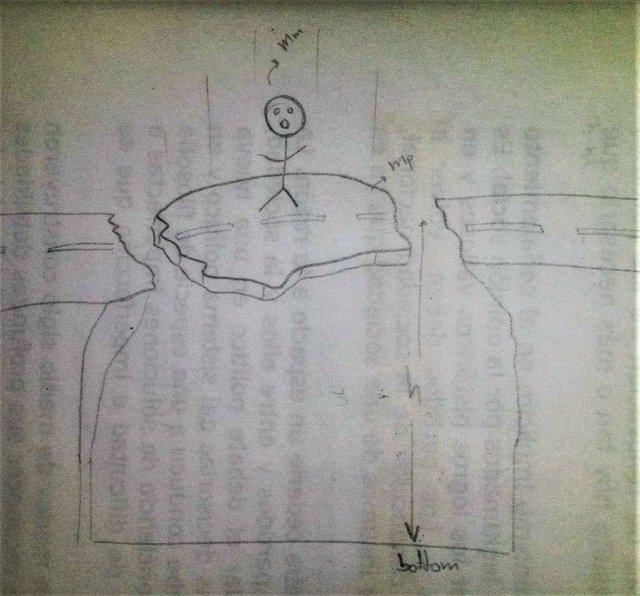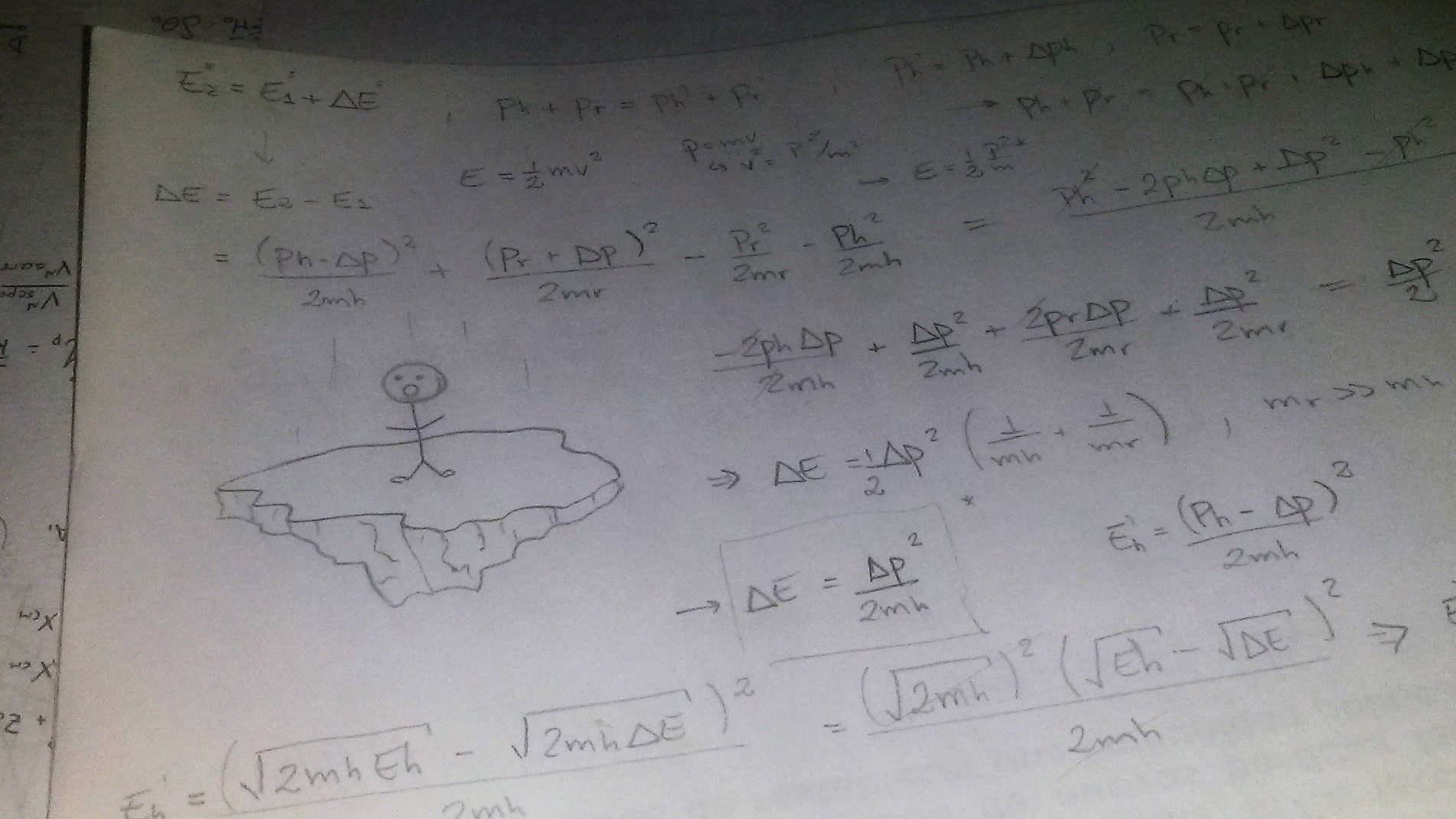Should he jump? - On cartoon mechanics
So, I went to the bank yesterday and as it's common these days, the waiting line was huge. While waiting for my number to be called, I overheard two kids talking about someone jumping from a falling rock right before it hit the ground. Their mother (I assume) soon lost patience regarding the ridiculous amount of people waiting and left, but the image of The Coyote pulling that stunt remained in my head so I took out a piece of paper.
Now, I'm aware cartoons are not the best place to find logical answers to physic related questions but... What about a situation like that in real life? Say a man is walking carelessly on the street and suddenly a hole opens up and a huge block of pavement just falls in it, taking him with it. If he could determine the exact moment before both him and the pavement would hit the bottom, would jumping right then help in any way?
The quick answer
Yes, but probably in a negligible way.
The not-so-quick-answer
The easiest approach to this is paying attention to the velocities.
Let's say our guy falls from a height of 50m.

stop laughing at my drawing please
Both he and the rock are in free fall (accelerated only by gravity), so the (modulus of the) velocity just before it reaches the bottom, if he doesn't jump, is the same as the pavement's and is given by:

Now, they say a human jumping gains a speed of about 3 m/s and I believe that's plausible so, if our guy jumps right before the chunk of pavement hits the bottom, he'd have a velocity of -3 m/s relative to the falling piece of pavement. If we assume there's an inertial frame of reference in the bottom of the pit, his final velocity would be:

Where Va is the absolute velocity of our man right before hitting the ground, Vrel is the relative velocity of the man in reference to the pavement and Vp the final velocity of the pavement. The absolute velocity then would be:

What does this mean for our guy?
Well, he'll hit the ground at 28 m/s, that's approximately 100 kph (about 62 mph)! So, in our scenario of a 50 meter fall, he doesn't make it.
Now, what if he was falling from 15 meters instead? In that case his final absolute velocity would be:

That's equivalent to 50 kph and 30 mph. Not a pretty hit, but he has much better probabilities of surviving this one!
Bottom line
Depending on the height of the fall, jumping might help with mitigating the impact once in the bottom.
Please note that a bunch of assumptions were made here. Technically, while on free fall over the pavement, our guy would find it really difficult to jump, since trying to bend his knees would result in his legs going up while his torso goes down a similar distance due to conservation of momentum. Also, on the actual fall, inertia would retard his fall from the pavement an instant. And we didn't even mention other factors like wind resistance. Either way, I think this is a funny approach to the subject.
Also, if someone finds there's a mistake in the reasoning or in the math (as simple as it was) please let me know!

I think that the air resistence has a greater influence on the end result since the air resistence increases quadratically with the velocity.
It even might be the case that he by himself can generate more air resistence then the piece of rock.
It also might be the case that lying down on the rock will reduce the damage since the impact will be more equally distributed.
Air resistance is definitely something to consider on free falling objects, specially because it's that drag what determines the terminal velocity of the object and consequentially the maximum amount of kinetic energy the body can achieve before impact.
The case in which the person generates more drag than the rock doesn't really convince me. It's possible, but drag depends on fluid density, drag coefficient, area and the square of the velocity as you mentioned and since the fluid and the velocity are the same for both bodies, what makes the drag force different for each bodies are the Cd and the area. As much as both drag coefficients may vary (and I'm inclined to think it would be higher for the rock than for the human) the area contribution tends to be bigger because of the order of magnitude since one of the considerations is that the rock is much more massive than the human. Hence, drag would be bigger for the rock than the human, I think.
As for the lying down, it made me think. It would make for a better distribution of the forces on the body indeed (since the stress is proportional to the force but inversely proportional to the area) but the human body is somewhat 'designed' to sustain charges vertically coming upwards. The bones on the legs and hip are sturdier than those on other parts of the body. The meniscus on the vertebral column as well as those in the lower articulations contribute to the absorption of the forces and of course the muscles on the legs which work (a little) like springs and dampeners, dissipating the forces as well. My opinion is that attempting to bend the knees to absorb the hit with the muscles would make for a better reduce on damages; it would protect most major organs too that would be crushed if the subject was lying down.
I hope all that doesn't sound as tongue tied as it did in my mid! Thanks for your comment and observations :)
g =9.81m/s, may be there is a slight variation due to this factor.
Well, actually gravity varies a lot (circa 1% maybe) around the globe due to Earth's geometry so a range of values could be used and still be a good approximation :)
I think it’s hilarious that you thought all this out XD In any case, it makes for a bizarrely interesting read.
Thanks! Well it was a really long wait and I hate waiting doing nothing :P
I'm glad you found it interesting :)